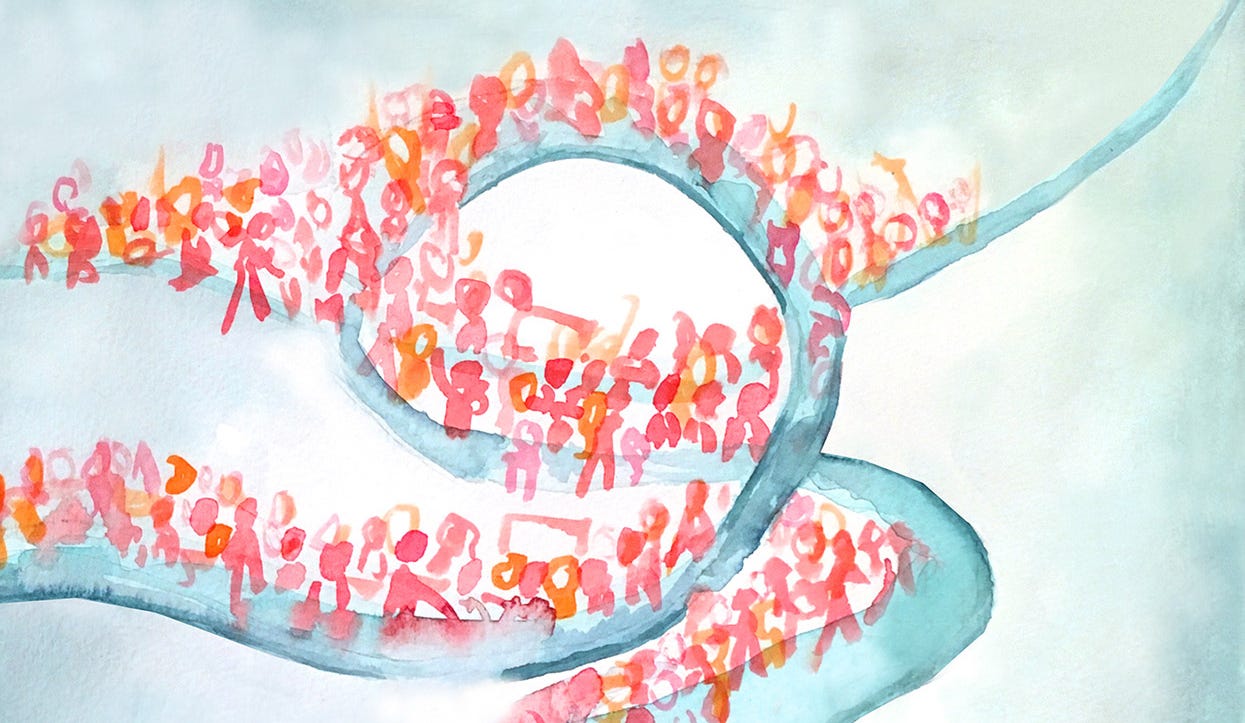Build Community, Space Will Come
Published in ATÖLYE Insights · 11 min read · June 16, 2017
A lean startup blueprint for space-driven ventures
Authors: Engin Ayaz, Co-founder & Head of Design, Bala Gürcan, Communications Assistant, Editor: Emre Erbirer
Most space-driven ventures (coworking spaces, makerspaces, event venues, incubation centers) face the challenge of testing product-market fit since it is difficult to prototype space. After all, if you do not have the actual space, you cannot fully predict the flow of your users. Meanwhile, if you have built the space and you are mistaken regarding business or user experience insights, it's already too late to iterate as it is too costly to re-build.
Being aware of such reality, most space-driven ventures rely on existing market research combined with intuition to form the foundation for their project. If the founders of such ventures are seasoned experts or good observers, they may get it right. However, in most cases, it is difficult to get it right if you try to build fast and see who shows up. In some cases, they never show up. Then you have an empty space, but no community.
Concepting
Build a community around values, then search for the space to fulfill their needs.
Our journey for establishing ATÖLYE followed a rather long and circuitous route as the project started abroad as an academic project, with no space or capital at our disposal. As co-founders, Kerem Alper and I (Engin Ayaz) were both living abroad in the US when we thought of establishing a community-centered innovation platform in Istanbul, Turkey. We both were passionate about the idea of a symbiotic system that brings freelancers, small companies, startups and enterprises under the same roof for collaboration, co-learning and co-creation. We also experienced the power of transdisciplinary thinking based on our learnings in our respective institutions, Stanford and NYU, and felt that our complementary backgrounds in design, technology, business and entrepreneurship could help bring this project to fruition.
Meanwhile, we had no access to any existing space or capital, which meant that we had to build considerable momentum around this idea. We also wanted to make sure that the insight we had resonated with a large-enough audience.
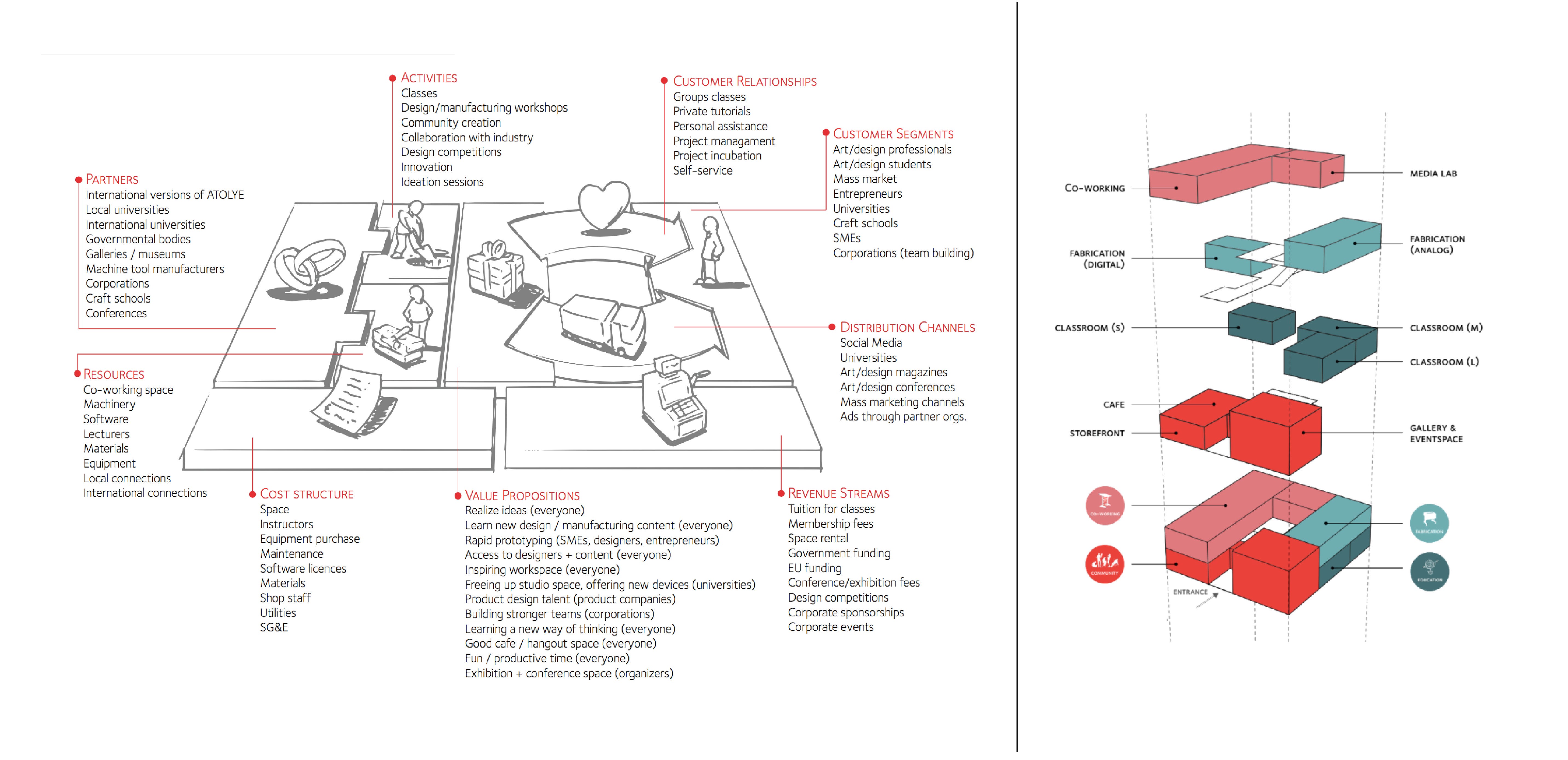
First step in 2013 was to do due diligence over 6 months at Stanford d.school and NYU ITP as part of our respective masters programs. Dividing the work, we first developed a business plan using the business model canvas, where we outlined our value propositions and related dependencies, ranging from learning to prototyping, from socializing to co-creation. At the time, we felt that the educational component would be a main driver of the system.
Alongside, we developed the first spatial program that consisted of a co-working area, fabrication area, media lab, classrooms, cafe, gallery and a storefront. At the time, we did not know how the pieces would fit together, but we intuitively knew that the synergy among these programs could create unique value.

We wrote our first manifesto to complement the strategy with culture. In this manifesto, we have emphasized on the potential of collaborative design, creating a space that would nurture the needs of the community and focusing our core vision into making social impact and social change.
Along these values, we refined our project, and finally ended up with a thesis slide deck that outlined our research as well as future plans.

Complementing this research, we emphasized clear communication by developing an animation that outlines our three key personas for the project: the creative freelancer, the corporate worker and the company manager. We envisioned a space that would not only contain these three personas under the same roof, but also create possibilities and ground for them to collaborate and co-create. In this way, we could take a step forward to our vision of establishing a transdisciplinary platform, which creates long term value and impact.
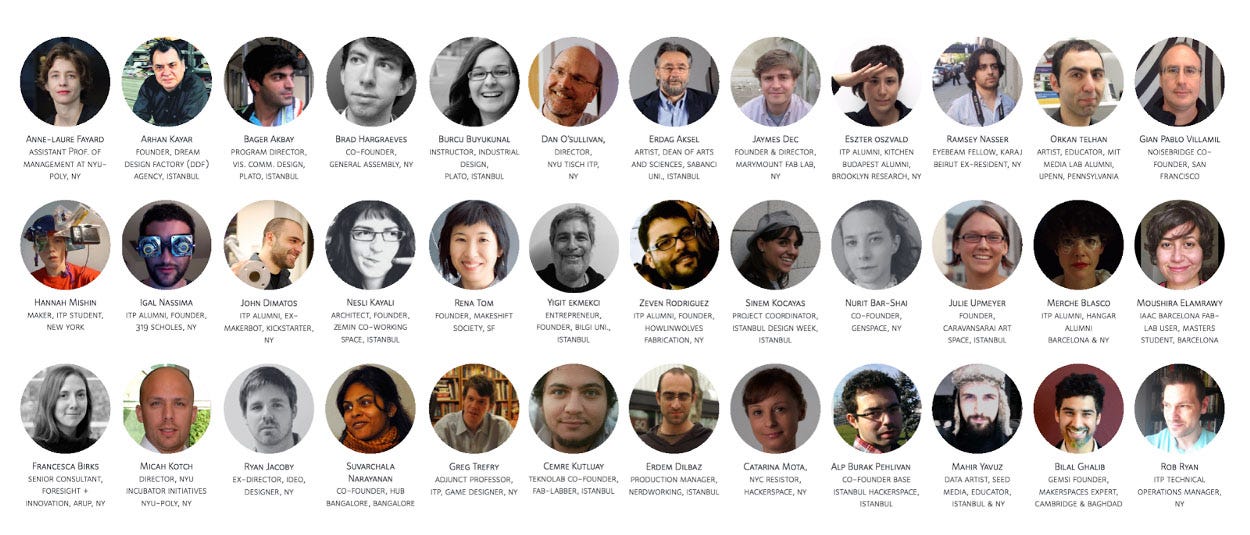
Alongside these assets, we interviewed more than 200 domain experts from academia and industry to minimize empirical mistakes. After six months of rather academic work, we were convinced enough about the big idea to carry the seed idea to the next level by returning back to Istanbul to kickstart the project on the ground.
Anticipating a timeline of two years, we knew that we had to start with the community and simultaneously look for a space and funding. Though optimistic in durations, it turned out that the process design was spot on. Specifically, we believed that our remit was less about finding the space, and more about cultivating a community centered around certain values. So, we embarked on a long community building journey.
Fieldwork
Create social momentum and ensure a balanced stakeholder map.
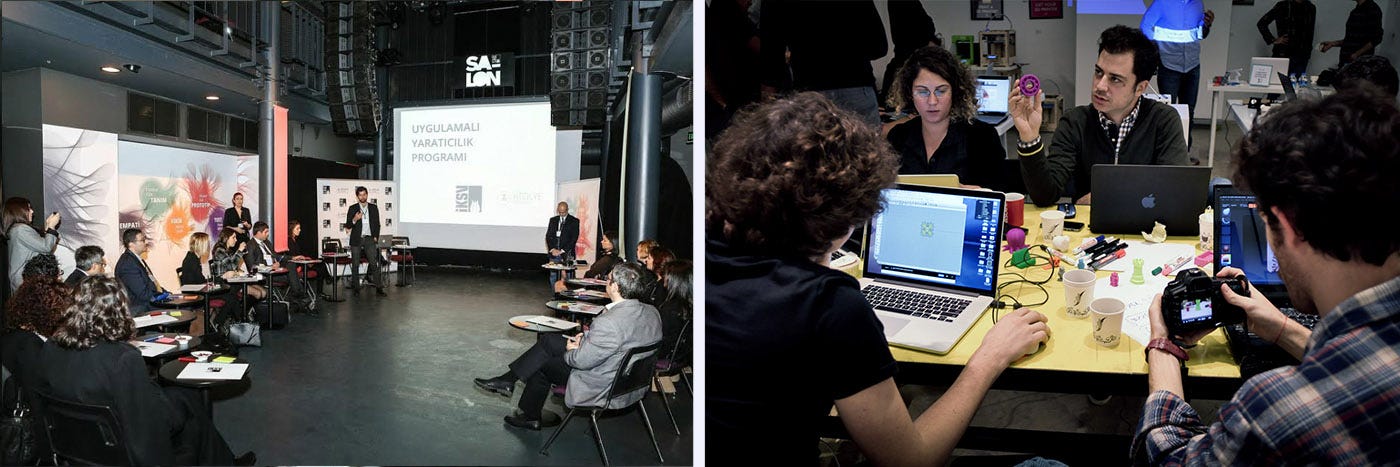
Over the course of one and a half years, we had one-on-one sessions with innumerable people from creative industries, large companies, small startups and academia to localize our idea. We also organized more than a dozen pop-up workshops by being the system integrator. Without owning any space or tools, we did workshops pertaining to design thinking (see video), jewelry (see video), pinhole photography (see video) and UX design. We rented or borrowed tools, and usually sought existing galleries, classrooms or meeting rooms as our territory. For instance, our 3D printer workshop at Mixer Gallery in partnership with 3Dörtgen in 2013 was the first open 3D printer workshop in Istanbul (see video), catalyzing a much wider practice of such workshops in coming years.
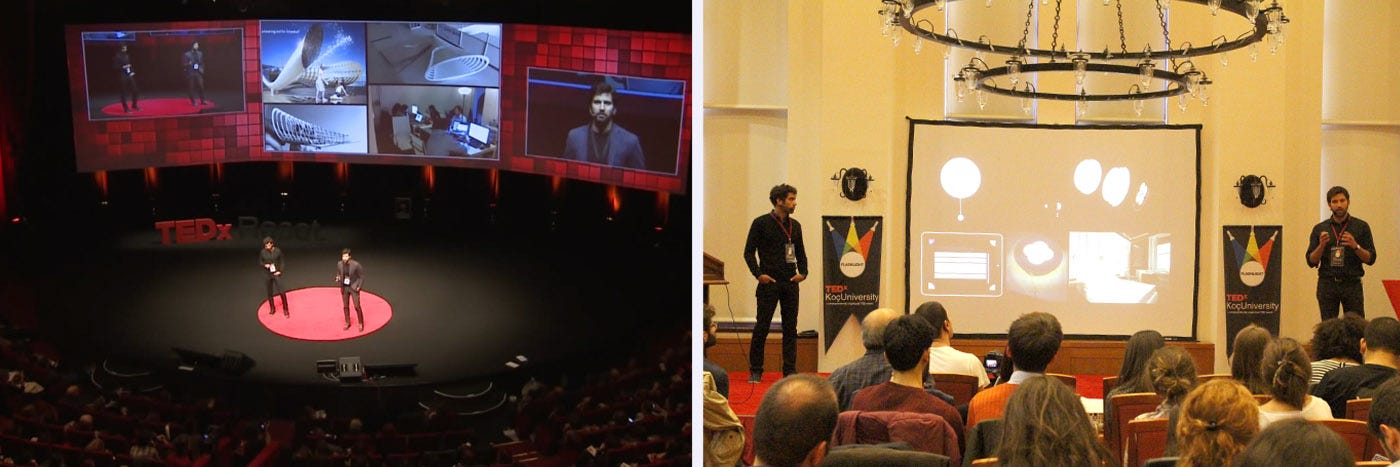
Aside from workshops, we presented in more than a dozen conferences including two TEDx Reset and TEDxKoçUniversity (both without subtitles, unfortunately), ran workshop-driven student competitions and hosted international thought leaders such as Banny Banarjee, Dan Klein and Dale Dougherty. All these activities, coupled with a consistent social media strategy that emphasized catchy video documentation, amassed a committed community of 7.5K people over the course of six months.
As a result of such social momentum, we were approached by various universities, real estate developers and companies to execute our idea under their roof. After all, most institutions were aware that such a creative force would be very advantageous to help make their establishment future-proof. Meanwhile, we were aware that remaining interdependent to more than a few funding sources was the only way to realize our vision.
Specifically, we imagined a system that truly diversified its revenue sources across the private, academic, corporate and governmental sectors. In terms of private venture funds, we aimed at finding no less than five independent individual international investors. We considered these investors not only as capital providers, but also experts in different sectors that would give guidance to our system over its lifetime. Therefore, we had a twofold capital in mind: economic and intellectual.
We also sought an academic partner and three corporate partners who would utilize the space on a repeated basis, fostering new interactions while creating supplemental revenue. Alongside, membership fees from a diverse community and ad-hoc event rentals form a reliable basis of income, while consulting and venture projects provided the much needed value creation over short and long term.
Finally, given the social impact aspect of our endeavors, we planned engage governmental funds on a urban and national scale as nice-to-have financial sources, yet we would not rely on them to make the venture work.
Combined, we believed that this particular system architecture of these stakeholders and their associated contributions would lead to a resilient system, immune to both local and global economic impacts.
Beta Space & bomontiada
Observe the community and scale the space according to momentum.
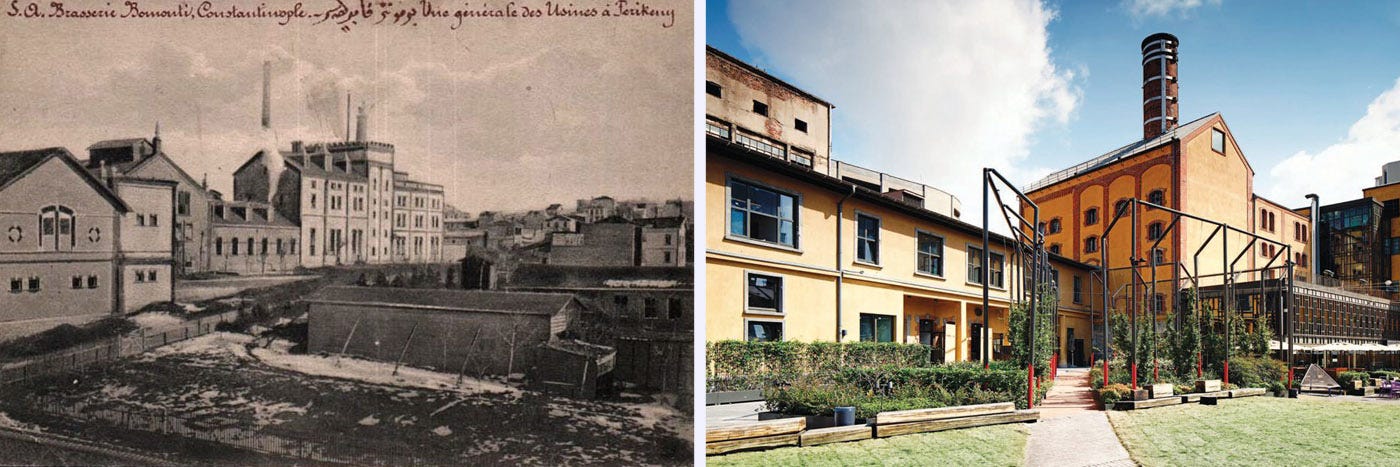
In January 2014, we were approached by the founders of Pozitif and Babylon, the leading entertainment group in Turkey over the last 15 years. They shared their vision of repurposing the existing 12,000 m2 Historical Bomonti Beer Factory (now entitled bomontiada) into a cultural hub, hosting makers of music, food, craft beer, performing arts, design and technology. We immediately realized that ATÖLYE could be a perfect fit in such a constellation, as we were in need of entertainment and art partners to complement our vision which was centered around design, technology and entrepreneurship.
Over the course of few months, we liaised with the bomontiada stakeholders, and tailored our spatial program to the existing available spaces. Selecting a 700 m2, single-floor layout naturally divided into four compartments, we felt that our abstract idea was gaining physical roots via the edifice. Given the multi-stakeholder, large-scale nature of the whole project, the process of initiating and completing the construction took much more than expected, allowing us to move in September 2015, i.e. a year and a half after the initial dialogues.
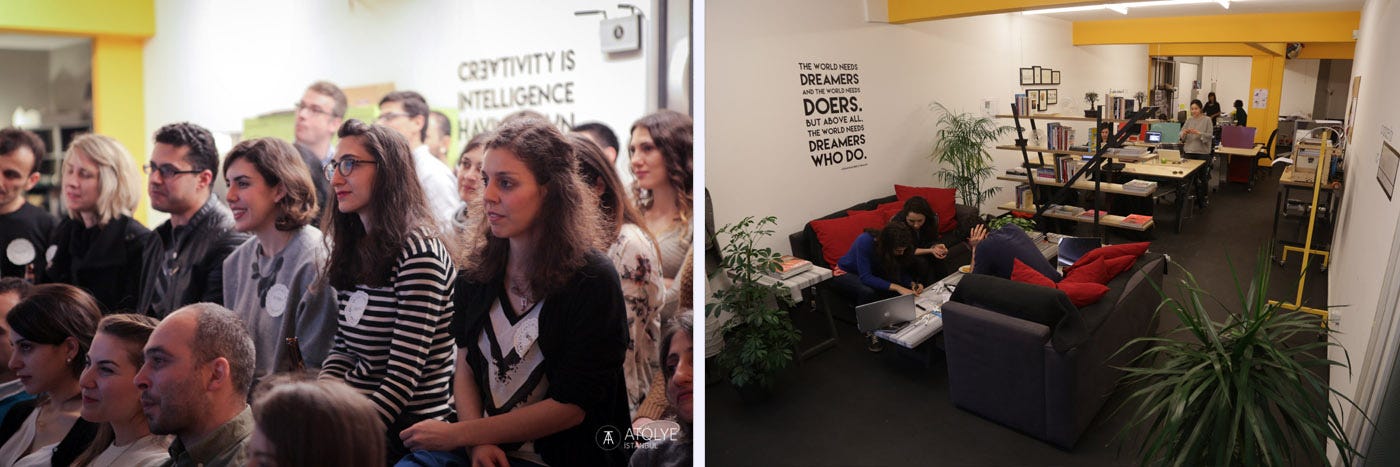
Nevertheless, such extension also allowed us to further prototype our business model by establishing a 150 m2 beta space, and thus fostering a dense 20-people anchor tenant community. Via this beta space, we had the chance to further build community bonds and prototype our business model, thus optimizing work processes before we moved into the large space, with its exponential increase of complexities. We also organized various social gatherings, such as the "Red Cushion Nights" that helped engage a wider stakeholder group (see videos here and here).
In September 2015, we finally moved to our current location in bomontiada. At that time, we had also structured the necessary private-academic-public partnership to make the system work. Although possibly a bit too granular, we believe that sharing this structure is worthwhile for those who may want to start similar initiatives.
In terms of private funding, we had reached an agreement with nine individual international seed investors, who agreed to contribute to the project in return of being in the closest circle to the community and the associated projects. We considered these investors not solely as funders but also as mentors with sectoral expertise ranging from software to education, from media to hardware technologies. From an institutional side, we also reached agreements with various companies to have them use our event venue on a repeat basis, thus securing fixed revenues.
In terms of academic funding, we made an agreement with Özyeğin University (ÖzU) and their emerging venture 'Istanbul Institute of Design,' whereby ÖzU would use our workshop and event spaces during weekday evenings and weekends. This would not only increase the utilization of space, but also spark new interactions among professionals attending continuing education, college students, educators and the ATÖLYE community. It was a perfect fit and we are grateful for ÖzU to have believed in our vision early on.
In terms of public funding, we applied for the 'Creative Cities' program organized by Istanbul Development Agency (ISTKA), where we proposed ATÖLYE to become a center of design and creativity for the city at large. Aiming for KPIs such as 72 workshops and 1200 visitors over a year, we planned for increased interaction with the public. The resulting funding subsidized our makerlab and also helped develop a compelling event calendar.

Today, almost two years have passed since our move-in to bomontiada. Where we stand, we have an inspiring space that became part of the Turkey Architecture Yearbook in 2015, but more importantly, a vibrant community of 150 people, a monthly event calendar of 20+ events and a network of 15K followers.
Through this journey, we realized that the "soft infrastructure" of events, community and a common vision is far more crucial than a sleek space. Our insight is that slowly growing organizational structures, where space remains a scarcity, can actually develop their creative muscles further. In our case, we had dreamt of an interdependent platform, which would bring together startups, freelancers, companies and the public sector. We were lucky enough not to have capital or space at our disposal, which enabled us to build a resilient structure from ground up.
Expanding this experience to other domains, perhaps a lean startup model for a space-driven venture, or "community-first-space-later-startup", can be as follows:
- Establish a concept with a clear vision, a business plan and an architectural schema
- Engage the community via nomadic workshops and events, staying lean in investment while iterating on the concept
- Formalize private, academic and public partnerships based on the promised vision and the coalescing community, contingent on finding the final space
- Build a beta space for prototyping the business model and establishing the core team
- Determine and move into the final space with community engagement throughout design and construction
- Test and re-test social, professional and cultural interaction points and diligently seek for feedback.
What do you think? Please, give us your feedback in the comments section.
Please sign up below to receive ATÖLYE's weekly e-newsletter: http://eepurl.com/cLJwK5
